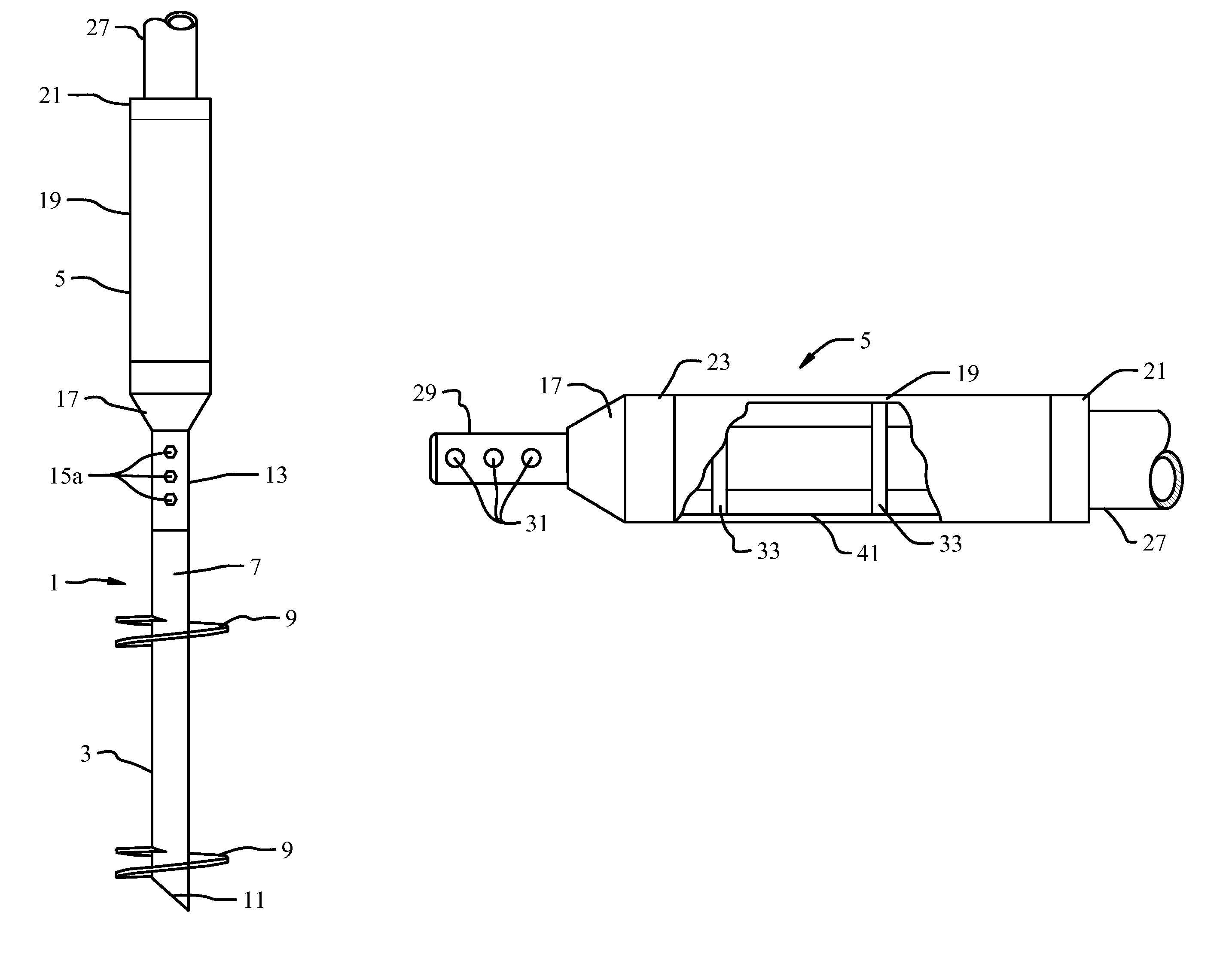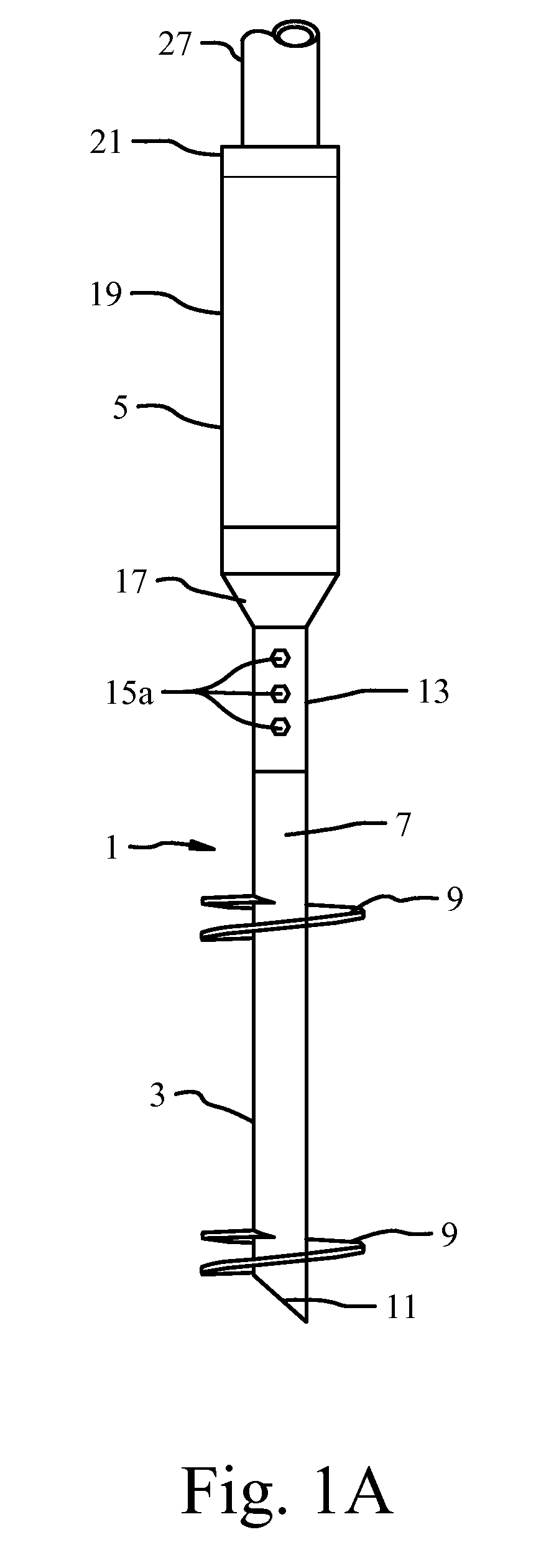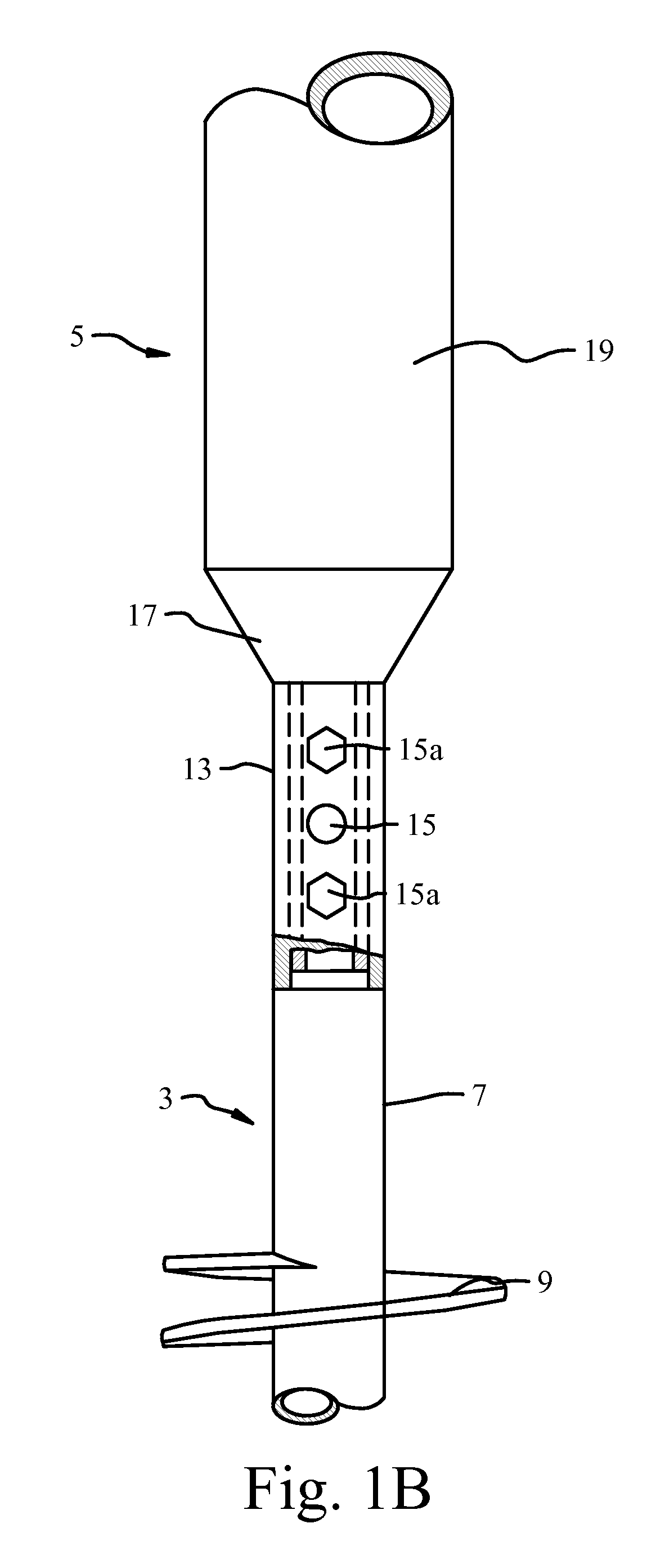Cable barrier post anchoring device and related method
a technology of anchoring device and cable barrier, which is applied in the direction of machine supports, applications, roads, etc., can solve the problems of too high risk of accidents, more accidents, and significant damage and/or injury to the property of others, and achieve the effect of less time-consuming and costly installation and/or repair
- Summary
- Abstract
- Description
- Claims
- Application Information
AI Technical Summary
Benefits of technology
Problems solved by technology
Method used
Image
Examples
Embodiment Construction
[0028]As shown in FIG. 1A, in accordance with the present invention, a line post anchoring device 1 for a cable barrier system is shown. The anchoring device 1 is comprised generally of a lower helical anchor 3 to which a detachable line post socket member 5 is secured. The helical anchor 3 includes in general a main tubular drive shaft section 7 to which one or more helical flights or plates 9 are permanently affixed, as by welding. The lower end of drive shaft 7 tapers to a point 11 to facilitate penetration of the ground upon insertion of the anchor 3. Point 11 may take the form of and be constructed in any of a variety of ways, but in the preferred embodiment shown in FIG. 1A, it is formed by cutting the lower end of the drive shaft 7 at about a forty-five (45) degree angle, and leaving the end hollow.
[0029]Flights 9 are helically shaped to cause anchor 3 to be screwed into the ground upon rotation of the drive shaft 7. Each flight 9 secured to the main drive shaft section 7 may...
PUM
| Property | Measurement | Unit |
|---|---|---|
| angle | aaaaa | aaaaa |
| tensile strength | aaaaa | aaaaa |
| depth | aaaaa | aaaaa |
Abstract
Description
Claims
Application Information
 Login to View More
Login to View More - R&D
- Intellectual Property
- Life Sciences
- Materials
- Tech Scout
- Unparalleled Data Quality
- Higher Quality Content
- 60% Fewer Hallucinations
Browse by: Latest US Patents, China's latest patents, Technical Efficacy Thesaurus, Application Domain, Technology Topic, Popular Technical Reports.
© 2025 PatSnap. All rights reserved.Legal|Privacy policy|Modern Slavery Act Transparency Statement|Sitemap|About US| Contact US: help@patsnap.com



